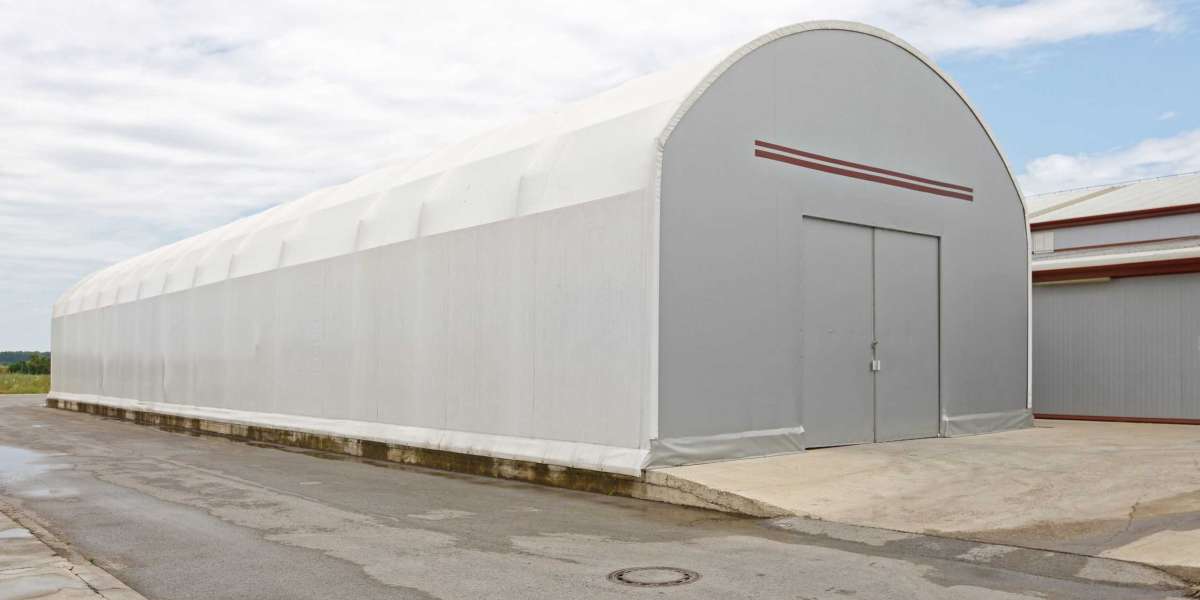Monsoon seasons, particularly in regions with heavy rainfall, can present significant challenges to construction, agriculture, and various industries. As the rains pour down, protecting workers, machinery, equipment, and materials becomes a priority. This is where a temporary monsoon shed comes into play. Offering a practical solution to seasonal weather, these sheds are designed to provide cover and ensure that operations continue smoothly despite the rain. In this blog, we will delve into what temporary monsoon sheds are, their importance, and why they are a valuable investment for various sectors.
Understanding Temporary Monsoon Sheds
A temporary monsoon shed is a structure designed to provide temporary shelter during the monsoon season, particularly in regions prone to heavy rains and storms. The purpose of these sheds is to protect workers, tools, machinery, and materials from the damaging effects of rain, moisture, and high winds. These sheds are not permanent buildings but serve as interim solutions, usually constructed with lightweight, weather-resistant materials. They can be easily set up and dismantled after the monsoon season ends.
Typically made of galvanized steel, aluminum, or other rust-resistant metals, along with waterproof tarpaulins or sheets, temporary monsoon sheds provide quick and efficient shelter for a variety of purposes. They are highly versatile and can be erected on construction sites, agricultural fields, or even in manufacturing units.
Why Are Temporary Monsoon Sheds Essential?
1. Protection of Materials and Equipment
During the monsoon season, construction materials such as cement, steel, and timber can absorb moisture, compromising their quality and making them unsuitable for use. Similarly, heavy machinery exposed to the rain can experience rust, corrosion, and electrical malfunctions. A temporary monsoon shed helps mitigate these risks by providing a dry, sheltered environment for both raw materials and equipment. This reduces the need for costly repairs and replacements.
2. Ensuring Worker Safety and Comfort
Heavy rainfall during monsoons can create hazardous working conditions, leading to slippery surfaces and an increased risk of accidents. Workers exposed to prolonged periods of rain may suffer from illnesses, fatigue, or discomfort. A monsoon shed offers protection by keeping workers dry and comfortable, ensuring they can continue working safely. It also provides a place to take breaks, enhancing overall productivity and morale.
3. Continuous Operations Despite Weather Conditions
Many industries, particularly construction, agriculture, and manufacturing, have tight project deadlines that cannot be delayed due to seasonal weather. A temporary monsoon shed ensures that operations continue without disruption, even when it rains heavily. This helps businesses maintain schedules, avoid delays, and ensure that projects move forward as planned.
4. Cost-Effective Solution
Building a permanent structure to protect equipment and workers from the monsoon season can be expensive, especially if the building is only needed for a few months out of the year. A temporary shed is a cost-effective solution because it is affordable, easy to set up, and can be dismantled after the monsoon season ends. Additionally, it can be reused in subsequent years, offering long-term value.
Types of Temporary Monsoon Sheds
There are several different types of temporary monsoon sheds, each designed to meet the unique needs of specific industries or applications.
1. Construction Site Sheds
On construction sites, materials such as cement, steel beams, and machinery can be susceptible to the elements. To prevent damage, a temporary shed is constructed to cover these materials and keep them dry. These sheds are typically large and open on all sides to allow easy access for workers and machinery. They are designed to withstand heavy rainfall and strong winds, ensuring the safety of workers and the integrity of the construction materials.
2. Agricultural Sheds
In the agriculture industry, crops, seeds, and tools need protection during the rainy season. A temporary monsoon shed can provide a safe, dry space for storing equipment, fertilizers, and agricultural supplies. In addition, it can be used as a shelter for farm workers, allowing them to take shelter during rainstorms and continue their work when the weather improves.
3. Industrial Sheds
Manufacturing facilities and warehouses often store large quantities of raw materials and finished products that are sensitive to moisture. A temporary monsoon shed in industrial settings helps protect inventory and ensures that production processes are not interrupted due to weather-related issues. These sheds can be used to store finished goods or machinery and can be designed with sufficient height and ventilation for optimal functionality.
4. Event-Related Sheds
Temporary sheds are also essential during monsoon seasons for outdoor events such as exhibitions, festivals, and fairs. These structures provide a safe space for attendees and vendors, shielding them from rain while maintaining the flow of the event. Quick to assemble and disassemble, they allow event organizers to be prepared for unexpected weather.
Benefits of Using Temporary Monsoon Sheds
1. Versatility
One of the primary advantages of temporary monsoon sheds is their versatility. These structures can be customized in terms of size, design, and material to fit the specific needs of different industries. Whether you need a small shed for equipment storage or a large one for workers, these sheds can be easily tailored to accommodate your requirements.
2. Durability and Strength
Although temporary, these sheds are designed to be strong enough to withstand the challenges posed by the monsoon season. Built with durable, weather-resistant materials, they are capable of withstanding heavy rainfall, strong winds, and even storm conditions. This makes them reliable even in extreme weather scenarios.
3. Easy Setup and Dismantling
Setting up a temporary monsoon shed is a relatively quick and simple process. Since the structure is designed to be dismantled easily, it can be taken down and moved when necessary. This makes it an ideal solution for temporary needs, especially in industries where a permanent structure is not feasible.
4. Minimal Maintenance
Temporary monsoon sheds require minimal maintenance compared to permanent buildings. Their simple design and the use of weather-resistant materials mean they can endure through the rainy season with little to no intervention. Additionally, they can be reused each year, making them a long-term, cost-effective solution.
Conclusion
A temporary monsoon shed is an invaluable asset for industries and individuals who need to protect their materials, equipment, and workforce during the monsoon season. Offering a cost-effective, versatile, and durable solution, these sheds play a critical role in ensuring that operations continue smoothly, regardless of the weather. Whether on construction sites, agricultural fields, or industrial warehouses, the benefits of using temporary monsoon sheds are evident, from safeguarding materials to enhancing worker safety and maintaining productivity.
Investing in a temporary monsoon shed is a practical decision for businesses and industries that need reliable protection from the seasonal rains. With their easy setup, adaptability, and resilience, these sheds are a go-to solution for ensuring that operations stay on track, rain or shine.








